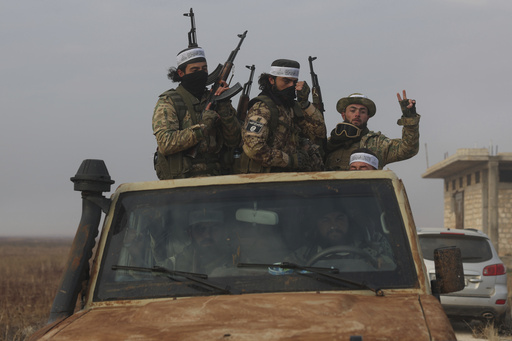
WASHINGTON — The long-standing civil conflict in Syria, now extending for 13 years, has surged into the spotlight again due to an unexpected offensive launched by rebel forces in Aleppo, one of the nation’s largest urban centers and a historic commercial city. This operation represents one of the most significant rebel advancements in recent years, as the implications of the ongoing conflict continue to extend well beyond Syria’s borders.
Notably, this marks the first coordinated attack by the opposition on Aleppo since 2016. That year, a severe air campaign led by Russian military forces played a key role in supporting Syrian President Bashar Assad’s reclamation of the region. The involvement of Russia, Iran, and allied groups such as Hezbollah has been pivotal in enabling Assad to maintain control over approximately 70% of the Syrian territory.
The renewed clashes have prompted concerns about the potential for another violent front in the Middle East, particularly as U.S.-backed Israel is concurrently engaged in conflicts against Hamas in Gaza and Hezbollah in Lebanon, both of which are aligned with Iran.
Robert Ford, who was the last U.S. ambassador to Syria, noted that ongoing Israeli strikes on various targets in Syria, particularly focusing on Hezbollah, along with a ceasefire between Israel and Hezbollah in neighboring Lebanon, have created an opening that rebels have seized upon to make their move.
The significance of the renewed fighting in Aleppo cannot be understated. Assad’s conflict with opposition forces striving to dethrone him has resulted in an estimated half a million fatalities and displaced approximately 6.8 million Syrians, creating a substantial refugee crisis that has contributed to the rise of anti-immigrant sentiments in Europe.
The roughly 30% of Syrian territory not controlled by Assad’s regime is governed by various opposition factions and foreign military presences. The United States maintains around 900 personnel in northeast Syria, primarily tasked with preventing a resurgence of the Islamic State. Both the U.S. and Israel have conducted sporadic strikes against Syrian government forces and Iranian-aligned militias. Turkey also holds a military presence in Syria, exerting influence over the diverse coalition of groups now advancing in Aleppo.
Following a lengthy period of relative stability in territorial changes among Syria’s conflicting parties, this flare-up in hostilities carries the potential for significant consequences. Charles Lister, a well-respected analyst on Syria from the Middle East Institute, remarked that if government forces falter, it could lead to a pivotal shift in the dynamics of the conflict. He also expressed concern about the risk of the Islamic State perceiving the situation as an opportunity to reassert its presence in the region.
Ford warned that the conflict in Aleppo could further destabilize the region if it leads to direct confrontation between Russia and Turkey, both of which have distinct interests in the ongoing situation in Syria.
The leading force behind the current offensive in Aleppo is Hayat Tahrir al-Sham (HTS), which has long been classified as a terrorist organization by both the United States and the United Nations. Its commander, Abu Mohammed al-Golani, rose to prominence as the head of al-Qaida’s faction in Syria shortly after the war’s inception in 2011, much to the dismay of other opposition leaders who sought to distance their objectives from extremist affiliations.
Initially, Golani was responsible for multiple high-profile bombings, made threats against Western nations, and deployed a religious police force to enforce strict dress codes for women. However, in recent years, he has attempted to reshape his image by cutting ties with al-Qaida in 2016, disbanding his religious police, and cracking down on more radical groups in his domain. He has also positioned himself as a defender of various religious groups, notably permitting the first Christian Mass in years to take place in Idlib last year.
Aleppo itself has a rich history, acting as a critical center for trade and culture for millennia. The city’s population reached 2.3 million before the start of the conflict. Opposition forces captured its eastern section in 2012, marking a significant moment in the struggle against the Assad regime. However, in 2016, a siege initiated by government troops supported by Russian air support resulted in widespread destruction; neighborhoods were ravaged by relentless shelling and the use of barrel bombs. With supplies dwindling, the rebels surrendered Aleppo that same year, marking a turning point in the war and solidifying Assad’s hold on the regions he controlled.
In recent months, Israeli air raids in Aleppo have targeted Hezbollah’s military facilities and Syrian army positions, as noted by independent monitoring agencies, while Israel typically refrains from publicly acknowledging its military activities in the area.
